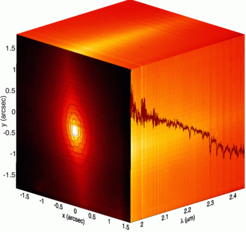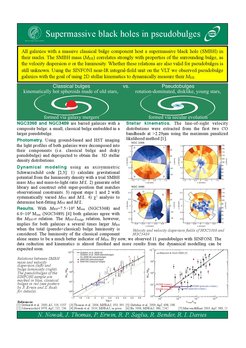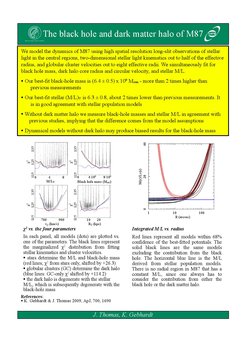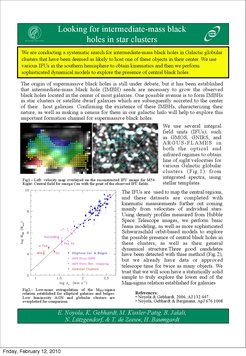Black Holes

Recent Results:
Studies of the dynamics of stars and gas in the nuclei of nearby galaxies have established that all galaxies with a massive (classical) bulge component contain a central supermassive black hole. The mass of the black hole is closely correlated with the bulge luminosity and the bulge velocity dispersion (see our recent findings), but the correlation is not well understood at the low and the high velicity dispersion ends.
Therefore, we measure stellar velocities in the nuclei of galaxies with SINFONI, and model them to constrain the masses of the nuclear black holes, and focus on the question whether galaxies with small and large sigma fall onto the black hole mass sigma relation (see the overview of our SINFONI BH project and retrieve the data we have published). Recently we measured the masses of the black holes at the centers of two pseudo-bulge galaxies (NGC 3368 and NGC 3489) and in a massive S0 galaxy (NGC 1332). Central black holes in massive elliptical galaxies are responsible for the desappearing of central cusps in these objects (see our results on BHs and central mass deficits). Black hole masses can be underestimated by up to a factor 2 if the presence of dark matter halos around giant elliptical galaxies is ignored (see our recent results on the black hole in M87). Finally, seeds black holes can be found in globular clusters (see our systematic search ).







Recent Papers:







